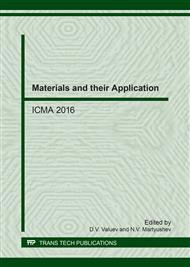p.63
p.68
p.73
p.81
p.86
p.91
p.95
p.101
p.105
Forecasting Performance of Ceramic Cutting Tool
Abstract:
The article considers the problems of forecasting the performance of cutting tools equipped with replaceable ceramic cutting bits. It is proposed to forecast the operability of ceramic tools on the ground of dependence between its performance characteristics and the microstructural parameters of the tool material. It is proposed to determine the parameters of ceramic bits microstructure by a nondestructive testing methods based on measuring the specific electrical resistance of ceramic materials. As a result of the study we have undertaken, a relationship was detected between the performance and specific electrical resistance of ceramic cutting tools.
Info:
Periodical:
Pages:
86-90
Citation:
Online since:
June 2017
Authors:
Price:
Сopyright:
© 2017 Trans Tech Publications Ltd. All Rights Reserved
Share:
Citation:


